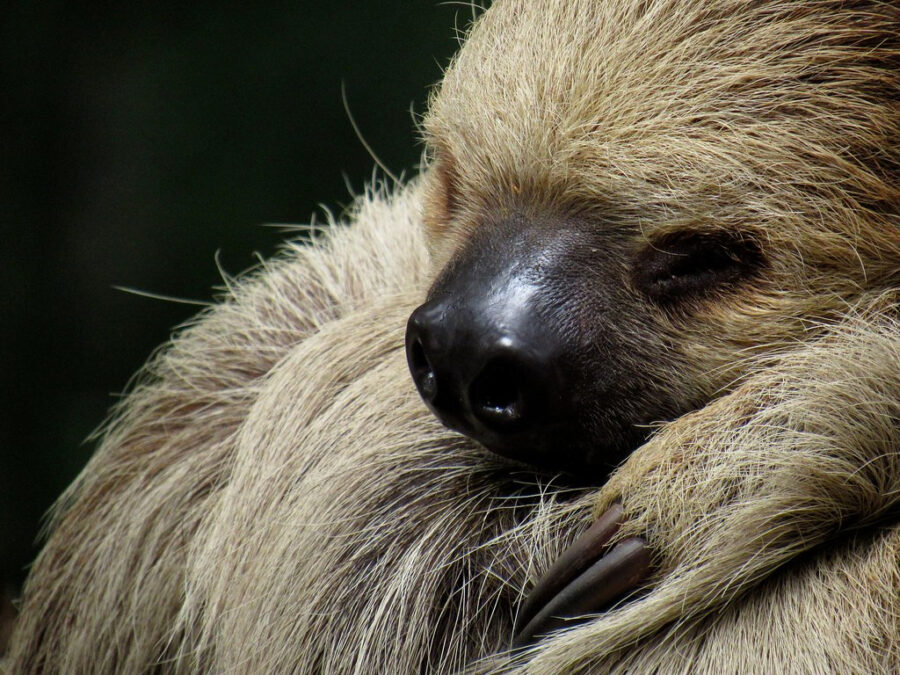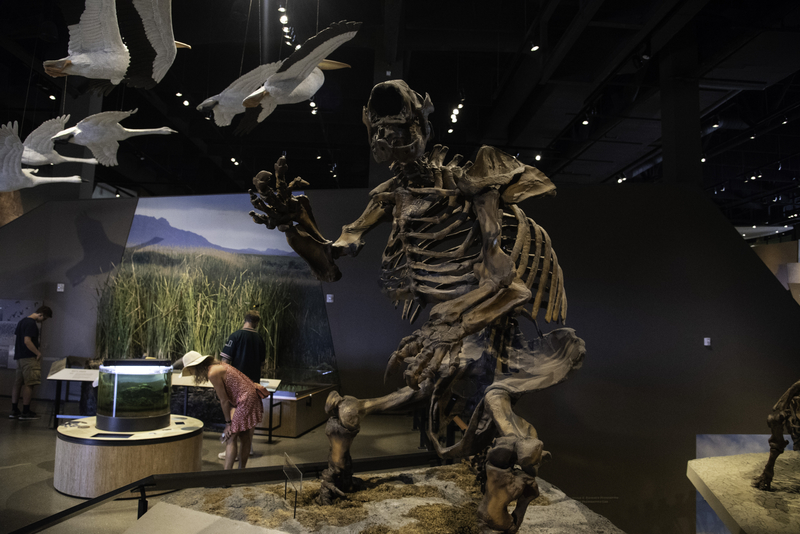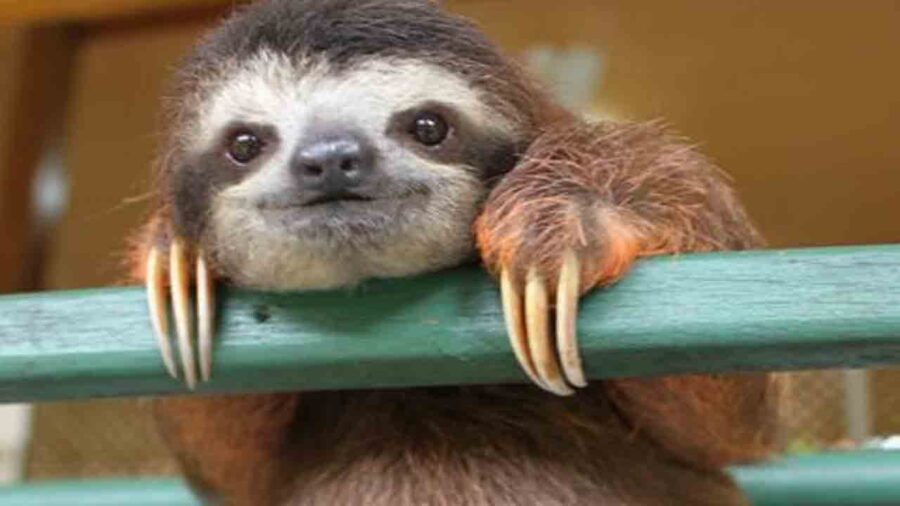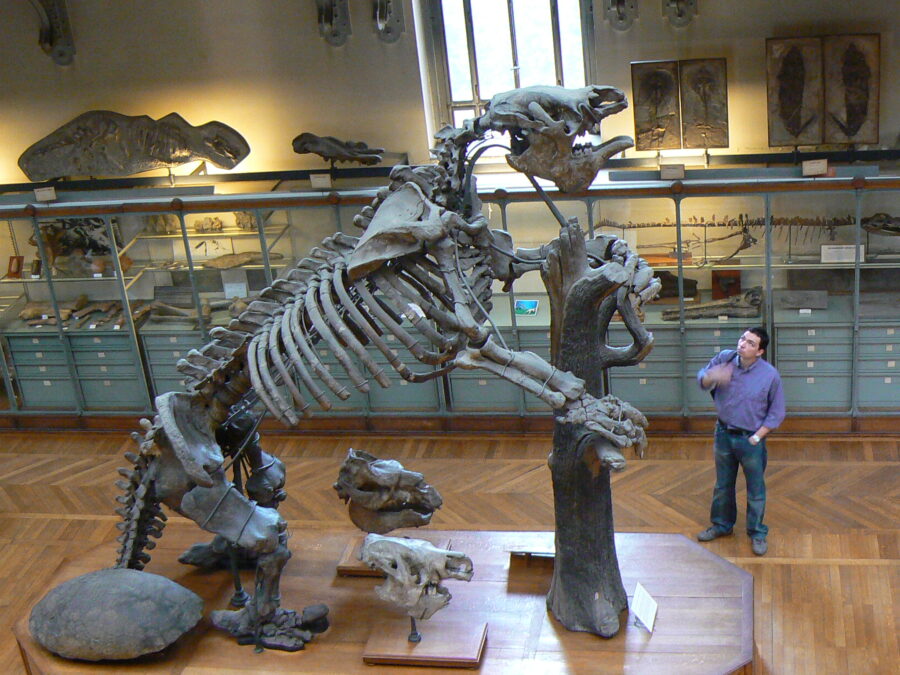Is The Giant Sloth Real? Uncovering The Amazon’s Secret Mega Creature
The Giant Sloth is the size of an elephant and it may be lurking in the Amazon rainforest right now.
This article is more than 2 years old

You know sloths as cute and cuddly creatures hanging around in trees or populating your internet feed with cute sloth memes. But they have a cousin, a giant cousin. It’s the size of an elephant and it eats meat. Legend calls it the Super Sloth or the Giant Sloth and unlike Bigfoot or the Loch Ness monster, we have evidence of its existence.
South America’s Amazon Rainforest encompasses nine countries and is home to over 2,000 species of animals. It is the largest rainforest in the world and is known for some of the most exotic species found anywhere on this planet. In it, you can find the white-knee tarantula, the eyelash viper, the black caiman, and the puma among its vast region. Not only does the rainforest have all these species of animals, but it also has close to 400 indigenous tribes (that we know of) who call it home. But there are many unsolved mysteries of the rainforest. Some have become legendary in status. One in particular, is the legend surrounding the Mapinguari, the giant ground sloth also known as the Giant Sloth.
The Real Giant Sloth
The Mapinguari, or Megatherium, is an actual creature that lived millions of years ago. This giant sloth was one of the largest ground animals to ever exist, reaching elephant-size in stature. The Mapinguari roamed for thousands of years until wiped out along with all dinosaurs.
Its much smaller descendant, the sloth, is actually seen in the Amazon Rainforest today and comes in a two or three-toed variety involving six different species. They live in trees and rarely do they come down from them. But they are one of the most popular animals in the Amazon and are seen often in their habitat. The Mapinguari, on the other hand, could possibly be the figment of one’s imagination. It carries the same mystery as, say, Bigfoot. Or the Loch Ness Monster.

This Giant Sloth legend, unlike Loch Ness or the Yeti, is based on the fact that the Mapinguari actually existed. In 1788 archeologist Manuel Torres discovered what turned out to be a rare fossil specimen. From this, the theorized history of the Megatherium was created. What they found was an elephant-sized sloth with enormous, powerful claws.
At first, it was assumed they lived in trees but with their massive size that thought was amended. A full-grown giant sloth weighed upwards of four tons and when it stood it would reach heights of 13 feet. This was a large mammal. But as that mass extinction event came and went, so did the Mapinguari. Or did it?
The Legend Of The Super Sloth
As often happens, legend has a way of working its way into reality. Sightings of this large beast have been on-going for many, many years by the indigenous people in the Amazon. At first glance, the Giant Sloth seems reminiscent of the many sightings of Bigfoot or the Loch Ness, but what causes a pause in these sightings is that many of them are by tribes who have never had contact with one another.
The story behind the “legend” is fascinating. It is said the Mapinguari was an Amazonian shaman who came across the secret to immortality. But this finding caused the shaman to become smug and that angered the gods. The angry gods punished this shaman for his hubris and turned him into a large, sloth-like creature and left him to wander the forest for eternity.
Giant Sloth Sightings
Descriptions of the Mapinguari, from those who claim to have seen the creature, vary some but one thing they all have in common, it’s big. It travels on fours but when it stands, it goes over seven feet tall. One description given noted that when the Giant Sloth stood on its hind legs, a second mouth was seen, located on its stomach.
It has been said the Mapinguari have backward-facing feet with sharp claws. Some have said it has but one eye and skin as tough as a crocodile which arrows cannot pierce. The two-toed sloth is omnivorous, meaning they eat both plants and animals. The three-toed sloth is almost entirely herbivore. Giant Sloth on the other hand, is noted for being carnivorous, eating any living thing it comes across to include herds of cattle. So far, thankfully, there has never been a report of the creature eating a human. The Mapinguari name translates to “roaring animal” or “fetid beast”. The smell of it is said to be rotten and it leaves a trail of destruction when its on the hunt for food.
Scientists Hunt The Giant Sloth
But these are just stories. Local legend without proof. So scientists went looking for Giant Sloth evidence. These stories caught the eye and interest of Dr. David C. Oren, an American ornithologist and head of the Zoology Division of Emile Goeldi Museum in Belém, Brazil. Dr. Oren spent eight years attempting to prove that the creature still existed.
His first attempt was in 1994. He had a lot of trouble trying to persuade other scientists to join him on his search for proof of the Giant Sloth’s. He eventually was able to put a team together though he was unable to convince Dr. Malcolm C. McKenna (who has since passed away in 2008), a paleontologist at the American Museum of Natural History in New York City. At the time Dr. McKenna expressed his doubt. “While there is always a chance of discovering some previously unknown large animal somewhere in the world, just as it is possible to discover some new island in mid-ocean,” Dr. McKenna said, “the likelihood is too small to draw me away from my work here. You can’t just go chasing each rumor of a sasquatch or yeti.”

Dr. Oren echoed Dr. McKenna’s thoughts feeling the only way he could convince his skeptics would be by bringing one back, dead or alive. You can count Paul Martin, a Meritus Professor of Geosciences at the University of Arizona as one more skeptic of the search. “I think he is 13,000 years too late. This sure does sound like the hunt for a Bigfoot or the Loch Ness monster,” Martin said. “The part of me that is completely romantic is rooting for David Oren. But where the science part of me is concerned I don’t give him a chance.”
Super Sloth Proof
Stories continue to thrive in the Amazon Rainforest and the legend of the Giant Sloth continues to grow. Geovaldo Karitiana, a member of the Karitiana tribe, recounted his story to the New York Times. Karitiana says he saw one while he was hunting in the jungle. “It was coming toward the village and was making a big noise,” he said in a recent interview on the tribe’s reservation in the western Amazon. “It stopped when it got near me, and that’s when the bad smell made me dizzy and tired. I fainted, and when I came to, the mapinguary was gone.”
There are plenty of stories such as Karitiana’s. Indians, hunters, and rubber tappers have all experienced the Giant Sloth. Dr. Oren explains that he has spoken with seven hunters who claimed to have shot one, with another 80 claiming to have seen it. On top of the similar descriptions, another overwhelming similarity exists. Its smell. Oren thinks it could be a defense mechanism, one smelling of feces and rotting flesh.

In the end, though, it all comes down to proof. Oren’s expedition turned up a bunch of nothing. He was able to collect evidence as proof, but his evidence turned out to be anteater scat, inconclusive tracks, agouti fur, and tree claw marks. So, while no concrete evidence presented itself then, the stories continue to come from the Amazon. It didn’t help Oren’s quest that the hunters who claimed to have shot one didn’t keep one shred of proof that this happened. Apparently, the stench was too strong, so the beast was tossed.
While he’s more real than the Loch Ness Monster or Yeti, there’s still no proof that the Giant Sloth actually exists. Maybe he’s out there somewhere though, hiding very slowly and waiting for the right time to enter the modern world.












